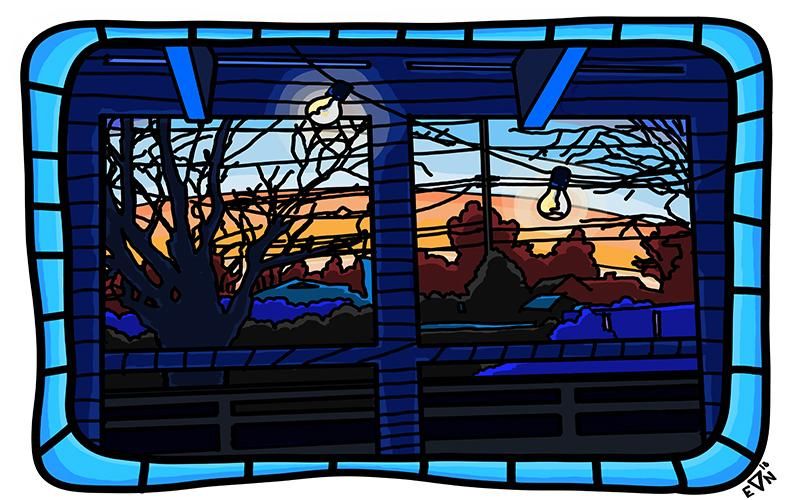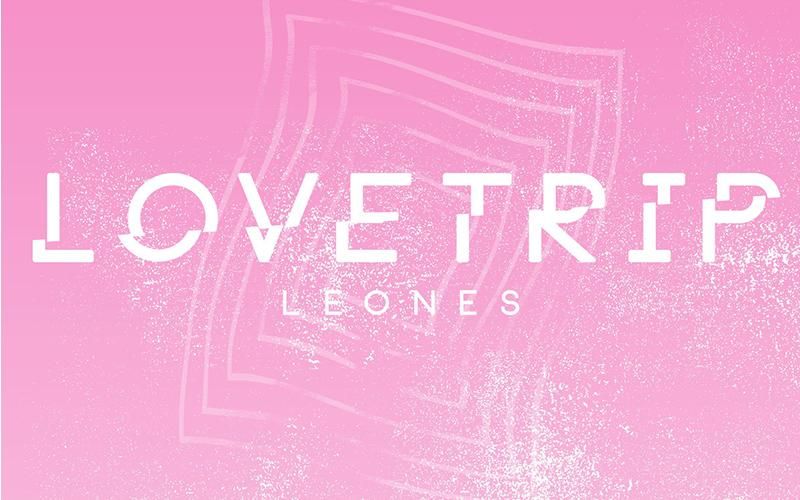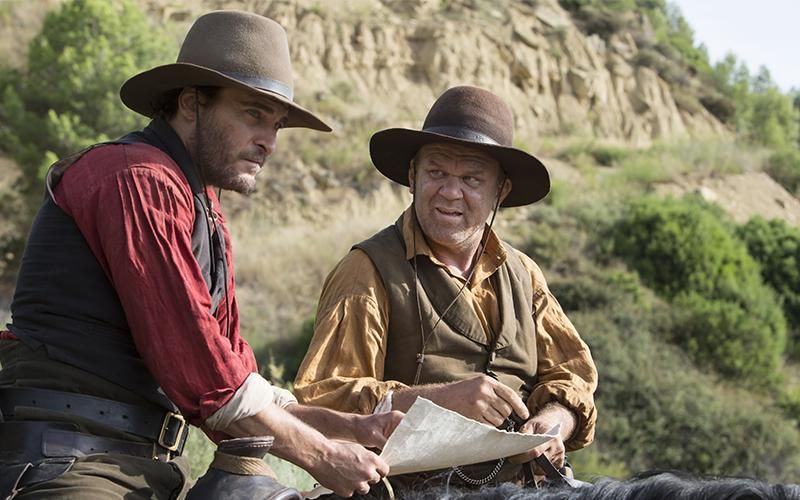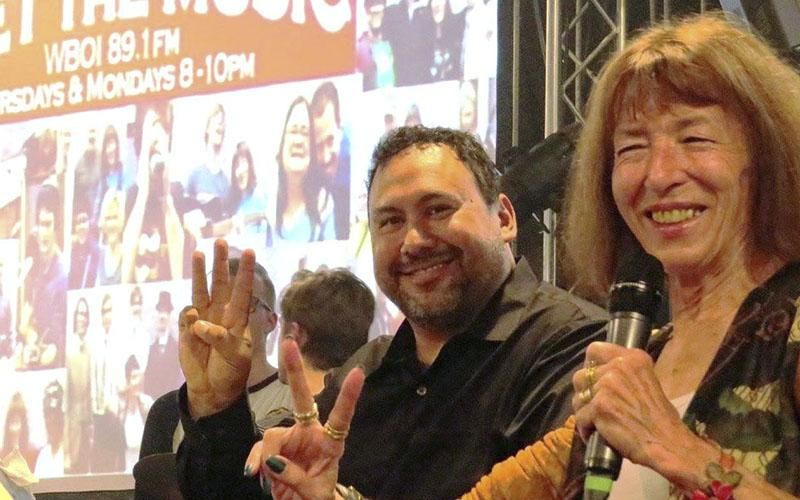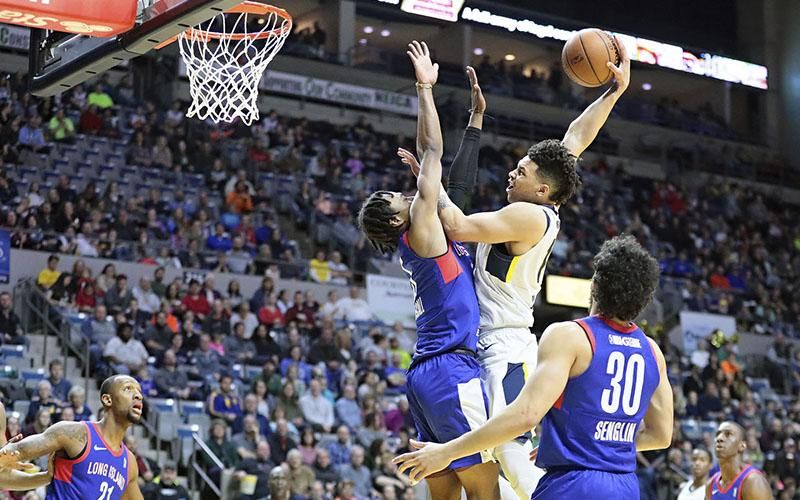Colorful yet simple landscapes featuring bold, black lines make up En Hughey’s ink and paper illustrations.
“I find inspiration while walking my dog, biking, taking road trips and in video games,” Hughey said. “This current series began in a state park. I’ve found that anytime I’ve needed a new start, or a jolt of inspiration, the outdoors can only help.”
But this inspiration started long before Hughey was taking walks with the dog and soaking in the support from the Fort Wayne art community, both audience and creators alike.
“I can’t really remember not being interested in art,” Hughey said. “My mom, my aunt, and I have been going to art museums since I was a kid. I was constantly drawing on everything, too. My mom still talks about how many times she had to repaint walls. I feel like it dawned on me when I recognized a specific print that my mother had hung up. She’s always been in love with impressionism, Claude Monet specifically. It seemed like we would stay for hours at the Chicago Art Institute, in the room of his work. It bothered me that he was on the wall there and at home, while I was only on the refrigerator. I wanted to be on the wall and had no grasp that there was any difference between us.”
So from a young age, Hughey was creating art, but also comparing it to the works of the greats like Monet. But when a young person decides to become an artist — as if it is a decision and not a driving hunger that must be satiated — all bets are off.
“I started exploring children’s books, animated films and comics. Bill Watterson’s Calvin and Hobbes has been a constant influence aesthetically and philosophically in my work. In 1994, a copy of Hayao Miyazaki’s My Neighbor Totoro came into my home and I was hooked. The way that this world was so unlike anything I had seen or read before opened doors in my imagination.
“I started calling myself an artist in high school originally, but drifted once I moved to Fort Wayne for college. After three years I happened to walk into the art building for the first time, changed my major, and have been back in the habit ever since. I feel like I really found my voice about a year ago though.
“When I was a teenager, I was afraid that pursuing art professionally might jeopardize what I love most: creating work. I moved here after a difficult period in my life, and was taking some time to heal. Once I was in college though, it became more of a question of, ‘Do I want to be happy?’ The answer was a resounding yes, so I took the leap. I feel like half of being an artist is deciding to make art every day, to keep investing and exposing yourself, even if you’ve already had a full day.”
With influences like Frida Kahlo, Winsor McCay, and Käthe Kollwitz, you might expect Hughey’s work to be a little different than it is. But, so many artists are inspired and influenced by their heroes, and those styles never make it into their own output. Hughey’s style is pretty instantly recognizable.
Pieces like “Margarite” and “Sun Please” show Hughey’s encompassing style: bold, black, segmenting lines and vibrant, varied colors that typically create beautifully complete landscapes. Where detail like shading or dimension is lacking, bravado and accessibility soar.
“In my ink and paper work, I’ll often go to a coffee shop before work and make the outline,” Hughey said. “I begin with ink and outline the inner frame. From there I’ll pen the scene I have in mind. The next step is to draw the outer frame, make the lines within the frame, and then sign in the corner. I like to let the drawing rest for several hours to ensure that the ink won’t bleed. The coloring stage consists of deciding on a color palette, putting it on a test paper, altering the colors as needed, then diving right in. Once the inking has begun, it must be done quickly so the shade stays even.”
A bonus about Hughey’s style is that it translates flawlessly as a digital medium. The creations are easily rendered via software. However, the physical, original copies offer more detail and are more desirable for purchase and collection. Hughey can stay consistent with this style, even migrating back and forth from digital to physical. This style, though cohesive, is ever-expanding. Two examples of this are “Sky 2” and “HCS.” They’ve left the straightforward landscape behind to focus on more precise subjects with more mood and artistically-imprecise intentions.
“It’s easy to stay within my style as long as I give myself permission to keep expanding it,” Hughey said. “It’s refreshing to wander away from what’s familiar periodically and experiment with a different medium or line technique. Not only does it give me a broader range of work, but I can bring the successes into my current series. I feel like the personal style that I’ve been exploring has a lot of the tools I need to convey the world I dream and wander in. There are times I feel like I’m interpreting the impressionism I grew up around. I want a moment and a maze, all at the same time.
“My ultimate goal is to live in a vehicle, keep traveling, and draw what I see. I want to illustrate children’s books and continue illustrating video games. A bonus would be to give someone a moment of peace, a small space in time to wander through a landscape and be reminded that the world is wide and full of possibility. I want to keep getting on the wall.”
You can find Hughey’s art on Instagram at @humancomicsans.
 Submit Your Event
Submit Your Event